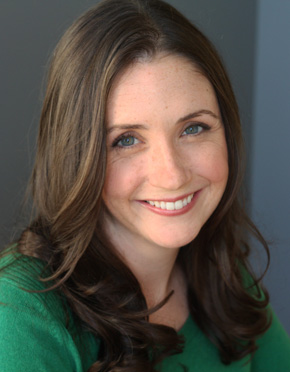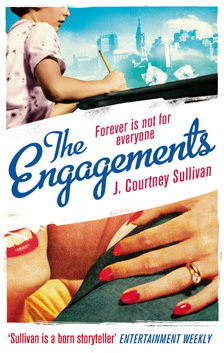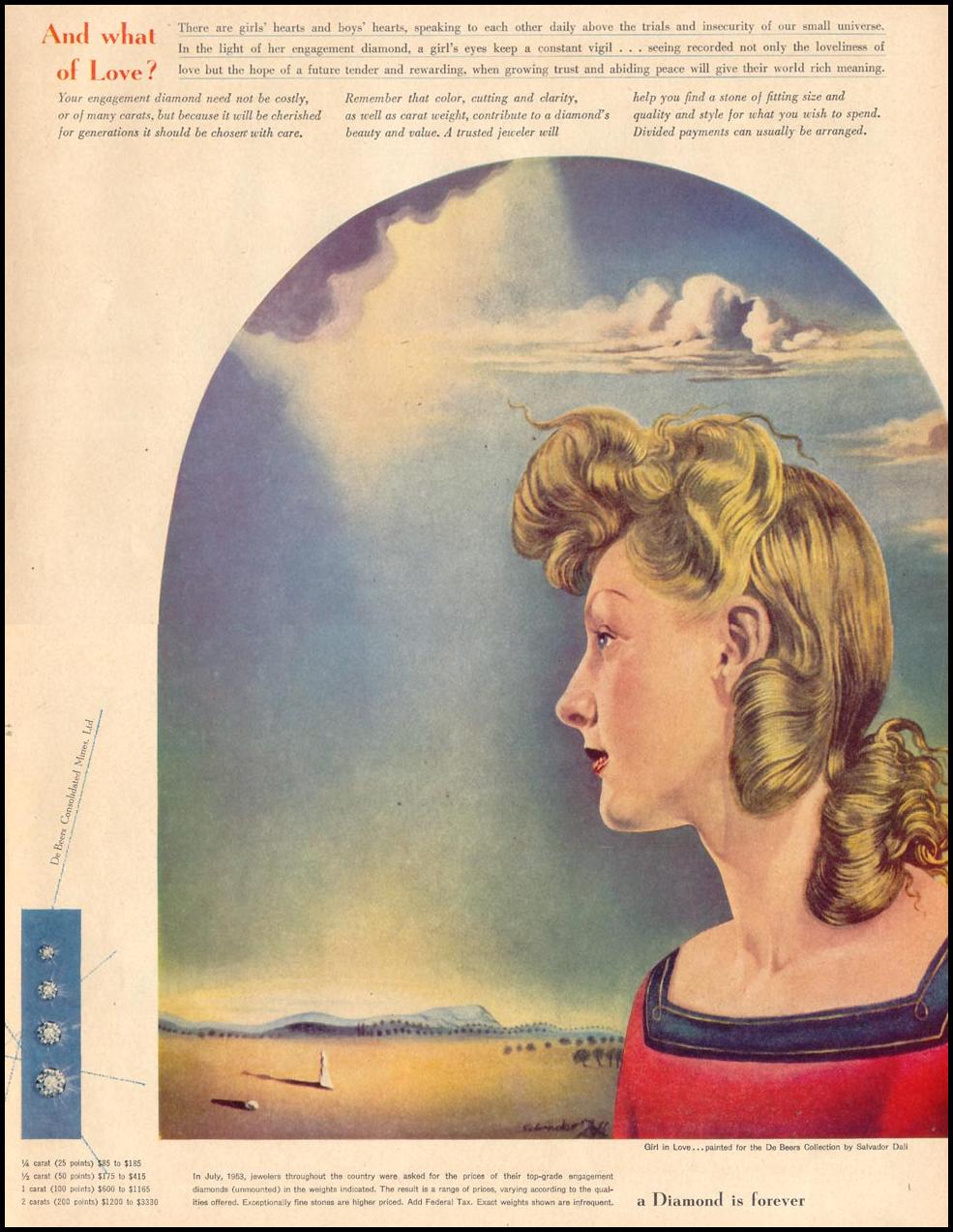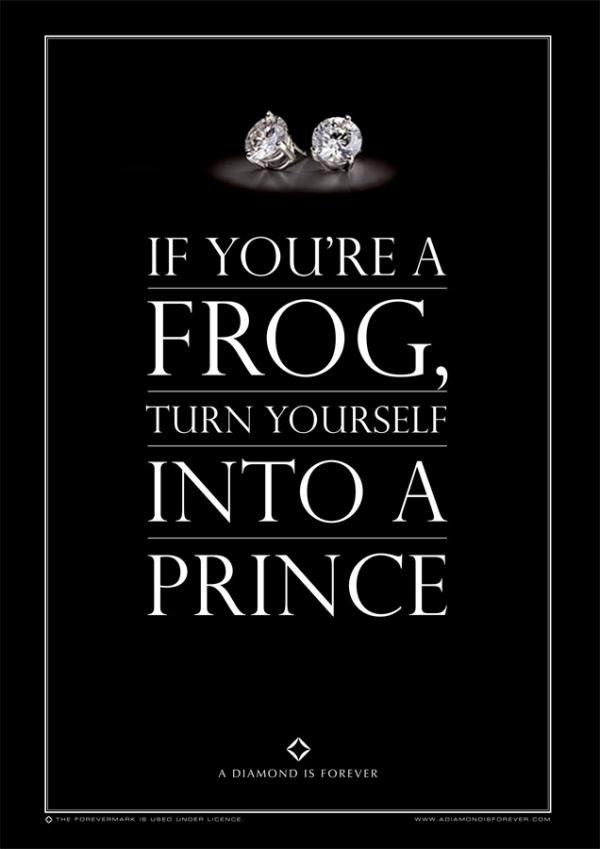J. Courtney Sullivan forever
by Farhana GaniJ. Courtney Sullivan’s epic third novel The Engagements serves up a sparkling slice of American social history alongside tales of love, marriage, break-up and everything in-between as it charts the fortunes of a diamond ring through the lives of couples spanning five generations from 1901 to 2012.
Conjuring great passion and deep betrayal, this inventive conceit reveals the changing attitudes to finding and keeping love in all its forms. To link these self-contained relationship tales Sullivan has cleverly intertwined the true-life story of Frances Gerety, the advertising copywriter who coined the famous “A Diamond Is Forever” tagline for De Beers.
Gerety wrote her copy in the post-war era of austerity when diamonds were considered an extravagant waste of money. Her words created the global tradition in which a diamond engagement ring is now an essential accessory in the marriage ritual, and Sullivan makes brilliant use of extracts from De Beers annual reports and campaign strategies, along with copy from Gerety’s final ad campaigns, to undercut the calculated manipulation of human desires and frailties.
I caught up with Sullivan to find out more about the shaping and writing of The Engagements – and learnt a good deal more besides.
FG: Your books feature several wholly different marriages – Frances to her job; Kate in everything but name; James insecure in his; Evelyn second-time round, now witnessing her son’s destruction of his own; Delphine both cheats and is cheated on. Why did you choose relationships as your key topic for this book?
JCS: One of the great joys of being a novelist is getting permission to peer into lives that you would otherwise know nothing about. Other people’s marriages are always a mystery, even those of the people closest to us. (And sometimes even our own.)
I wanted to write about marriage in all its complexity and at various stages. About why we choose the mates we do, and what happens next. The cast of characters allowed me to explore marriage from every angle – marriages tested by financial hardship or infidelity, a marriage in which the couple is happy with one another, but not with their adult son’s choices. What makes a marriage survive or fail? Is it about two well-suited individuals, or more about the circumstances that befall them over time? I am interested in how the experiences of one generation shape the next, so this is also very much a story about how our parents’ marriages influence our own.
And how did you hit on the idea of the De Beers strapline and a single ring to pull it all together?
The idea for the book first came to me when I accompanied a friend to look for her engagement ring. We were in a shop in Manhattan called Doyle & Doyle that sells antique engagement rings. As I looked at these beautiful rings, I kept wondering about the stories behind them – who had worn them in the past, and how had they ended up here? Since I could never know the answer, I decided to create a story for one ring and all the marriages it moves through over the course of a century.
I started off with the four couples. But I felt like there was someone missing. I knew this character would shine a more discerning light on diamonds and their origins, and how they came to represent love and marriage when previously no one wanted them. I was reading a fascinating non-fiction book by Tom Zoellner called The Heartless Stone and there was one paragraph about Frances Gerety in it. It said she had written the line “A Diamond Is Forever” in 1947 and that she herself never married. I knew right away that I had to write about her. (I actually wrote “Put her in the book!!!!” in the margins.)
Each character tells the story of a marriage, and together their stories span several decades. I was most concerned with their individual journeys, but at some point I realised that taken as a whole, they presented an interesting picture of how marriage has changed (and stayed the same) over the past hundred years. In Evelyn’s childhood, divorce was rare and rather shocking, while Kate grew up at a time when more of her friends had divorced parents than married ones. In Evelyn’s present day, Americans are only starting to get their heads around interracial marriage, while Kate has just seen the laws change in New York in favour of same sex marriage. I have always been fascinated by the idea that the moment we are born determines so much of our fate – who we are allowed to be, what jobs we can have, and even who we can and cannot marry. This theme comes up in all of my novels, and was definitely top of mind as I wrote The Engagements.
The characters are distinct and very well developed. Why did you choose these particular stories? Are there any other formations you considered and decided to leave out?
Evelyn and James came to me first. They were the easiest to write. I had this idea of a couple who have been married for decades, and came together in the first place because of a mutual loss. They were based on two people I met at a wedding years ago, and they turned into Evelyn and Gerald. And I kept thinking about paramedics – what was it like for them to go into the homes of strangers, whose only common trait was the fact that they weren’t expecting to need an ambulance that day? And so James came into being.
Delphine came next. Well-behaved women readers, the type who never make a fuss (and here I am raising my hand) always seem to like Delphine. She does something that the rest of us only fantasise about: Someone breaks her heart, and she sets out to get revenge.
In early drafts, Kate was a newly-engaged woman wrestling with her own ideas about marriage and her parents’ messy divorce. But over time, I decided that we’ve seen that character before. What we get less of, at least in America, are stories of women who choose not to marry, even though they might have loving partners and children, as Kate does. This also presented the storyline of Kate’s cousin Jeff and his wedding to his long-time partner Toby. When I started writing the book, same-sex marriage had just been legalised in New York, where I live. I loved the idea of writing a wedding scene with two grooms.
And Frances came last. As I said, while I wrote the other four characters, I felt someone was missing. I tried lots of things – at one point it was a fictional De Beers ad man who was Evelyn’s high-school sweetheart. But finally, thankfully, I learned about Frances and that was that.
Did you shape the characters first? Or was your first step to research the history of De Beers’ marketing strategy?
To some extent, it was all simultaneous. I researched the characters as I wrote them. For James, I spent time shadowing paramedics in Cambridge, Massachusetts. For Delphine and PJ, I interviewed experts in the world of classical music. Frances Gerety was the first real person I’ve ever written as a fictional character. I wanted to be as accurate as I could in my portrayal of her, so I interviewed a dozen of her former co-workers and friends, found a long lost interview she had given, and her letters.
In 1982, a journalist named Edward Jay Epstein wrote an incredible article for the Atlantic Monthly called ‘Have You Ever Tried to Sell a Diamond?’ It chronicles the ways in which the advertising agency N.W. Ayer (where Gerety worked) helped De Beers create the modern obsession with diamond engagement rings. Epstein quotes from confidential annual reports that Ayer presented to De Beers. The quotes are fascinating and I wanted to include the reports in the book. But it was important to me that I see the original reports with my own eyes. For two years I searched, following leads that took me to the archives at Boston University and the Smithsonian Institution, among other places, without luck. Days before I had to hand the novel in to my editor, I went to Frances Gerety’s former house at the invitation of its current owner. She gave me several boxes to take home. They contained the only things Frances left behind when she moved in the early nineties: Hundreds of photographs and, to my amazement, the annual reports! That discovery really enriched her chapters.
The Engagements can be described as a collection of interlinked short stories. Are you influenced by the short-story form?
When I was in my teens and early twenties, I read (and wrote) a lot of short stories. But as I’ve gotten older, I much prefer to read novels. There’s just so much more to sink your teeth into, and often more of an emotional investment to be made. When I was writing The Engagements – a book in which all these separate stories and characters eventually connect in ways big and small – I was inspired by novels that are similar in form, like Let The Great World Spin and The Hours.
Are there any particular stories, or collections, you would recommend?
The short story writers whose work always sticks with me are Alice Munro, Beth Nugent, Raymond Carver, Dorothy Parker, Ann Beattie, Amy Bloom and Ellen Gilchrist.
Who do you write for? Did you share your writing with anyone along the way? How many drafts in were you before you handed it over?
I usually share my writing with my agent, my editor and one very close friend in two or three stages along the way. You want your critical first readers to be able to approach the work with fresh eyes, so it’s crucial not to show them too many drafts. My usual rule of thumb is that I only share my work when I myself can no longer improve it without outside guidance. The Engagements was a little different from my other books. Because so much of whether or not it’s successful hinges on the last hundred pages, I did not show it to anyone until I had a full draft.
In college, I studied with Kurt Vonnegut. He suggested that fiction should always be written for one particular person – be it your friend, your wife, your high-school baseball coach, whomever. This is not how I tend to write. I don’t write for anyone in particular. But I have a background in newspaper and magazine journalism, which helps me to remember that there is an audience out there – that someone has chosen to read this book at this moment, despite a million other demands and options – so you’d better hold their interest.
You got engaged while you were writing The Engagements? Were you proposed to with a diamond?
I got a sapphire, flanked on either side by a row of tiny diamonds. Because I had been working on this book for a year when we got engaged, I decided I didn’t want a diamond. I wanted something different. Imagine my surprise when I came across the memos at Gerety’s house and found one from the 1950s stating that some girls were inevitably going to think they were just too smart for diamonds, and instructing jewellers to sell them a sapphire flanked by diamonds instead!
The Engagements is being made into a film by Reece Witherspoon. Can I pitch to have Elizabeth Moss (Mad Men) play Frances Gerety?!
Ha! Oh, I love Elizabeth Moss. Although I watched the first season of Mad Men and then had to stop, since I was writing about the advertising world and didn’t want to be too influenced. Anyway, yes, Reese Witherspoon is producing the film and I am so thrilled to be working with her. She really is a book lover, and this year alone she’s made two great book-to-film adaptations Gone Girl and Wild.
We are still in the early stages. An incredibly talented screenwriter is writing the script now. Once she’s done, casting begins. It’s all very exciting.
How involved are you in the film adaptation process?
I am not really involved at all, but they are very nice about keeping me in the loop. I see the film as a totally different work of art, inspired by my book, but not beholden to recreate the story scene for scene. I’m excited by the idea of handing it over to someone else and seeing her interpretation.
Would you describe yourself as a full-time writer today? Did you juggle writing with another job?
This spring it will be four years since I quit my day job to write. I wrote my first novel (Commencement) and half of my second (Maine) while working full-time as a researcher for an op-ed columnist at the New York Times. I also wrote for the paper a lot. Before the Times, I worked at a women’s magazine called Allure. So while I was a researcher and reporter at the Times, I also freelanced for a bunch of women’s magazines. I look back at the discipline it took to write those first two books with so many other professional demands on my time, and I am weirdly grateful. I think having a limited amount of time to write makes you more disciplined and forces you to choose – how badly do you want this? I wrote those first two novels on the weekends. There were so many sunny Saturdays when I was holed up in my little apartment writing, while my friends were out shopping and having brunch. But that was the only way. I think we are all driven to do something (or several things) like this. I have friends who run marathons, and while I’m amazed by them and sometimes think “I want to do that too!” I know I’ll never have the discipline to get up and run as far and as often as they do.
How would you describe your reading habits? Do you review many new titles? Do you buy books from a bookshop or website? Strictly paper, or eBooks too?
I occasionally review books for the New York Times Book Review, mostly novels and memoirs. I read a lot of non-fiction for research whenever I’m writing something new. But my great love is fiction. I read lots of contemporary novels, as well as books I should have read in the past, but somehow didn’t get around to. I live in Brooklyn, where we are lucky to have a great number of wonderful independent bookshops. This is where I buy the bulk of my books. I have yet to read an eBook.
And which books have helped shape you as a writer?
So many. I fell in love with the books I read as a child, and that love of reading is what made me want to write fiction from a very young age. Books like the Little House series by Laura Ingalls Wilder, the Anastasia novels by Lois Lowry, Beverly Cleary’s Ramona, The Secret Garden, Stuart Little, and on and on.
In college, I was astounded by the Victorians. Bleak House was and still is the most incredible novel I’ve ever read, for its ability to just encapsulate an entire world between two covers. My favourite contemporary novel, which I first read at the age of eighteen, is A Thousand Acres by Jane Smiley. It completely puts to rest the dull and absurd conversation about whether fiction by a woman about women’s lives can be considered important literature.
As you’re on tour, you may not have as much time to read as you’d like. Did you bring a book/s on this trip?
I always travel with books. I usually bring several on any trip. Since I have yet to read an eBook, this means that my bag is heavier than it ought to be, but I love that moment toward the end of a flight when everyone has to switch off their electronic devices – the Kindles get shut off, but I get to keep reading until we land. For my trip to London, I brought Ann Patchett’s new essay collection, This Is The Story of a Happy Marriage, The Country Girls trilogy by Edna O’Brien, and Middlesex by Jeffrey Eugenides (I might be the only person on earth who hasn’t read that one yet.)
I flew home with two more novels, gifts from wonderful women I met in London: Mrs Palfrey at the Claremont by Elizabeth Taylor, and Someone at a Distance by Dorothy Whipple.
What advice would you give to writers trying to break in?
I would tell them that all good writers experience doubt. A lot of doubt, all the time, no matter how critically-acclaimed their books are, or how many copies they sell. What separates a successful writer from the pack is the willingness to live with that doubt and keep going.
If you weren’t writing you’d be…?
My fantasy back-up career was always kindergarten teacher. It involves a similar amount of playing make-believe as writing fiction does. And kindergarteners share my passion for snack time and naps.
J. Courtney Sullivan’s novels Commencement, Maine and The Engagements have all been New York Times bestsellers. The Engagements was one of People magazine’s Top Ten Books of 2013 and an Irish Times Best Book of the Year. Courtney’s writing has also appeared in The New York Times Book Review, The Chicago Tribune, New York magazine, Elle, Glamour, Allure and the New York Observer. She is a co-editor, with Courtney Martin, of the essay anthology Click: When We Knew We Were Feminists. She lives in Brooklyn.
jcourtneysullivan.com
The Engagements is published in paperback and eBook by Virago. Read more.
Farhana Gani is a founding editor of Bookanista.
Follow her on twitter: @farhanagani11





